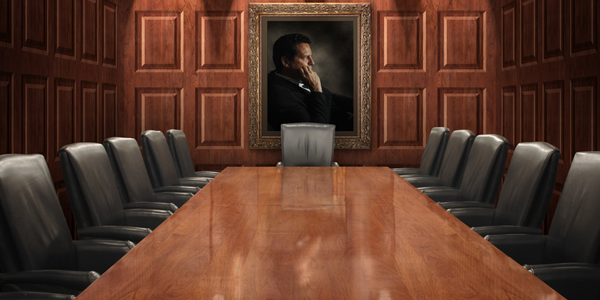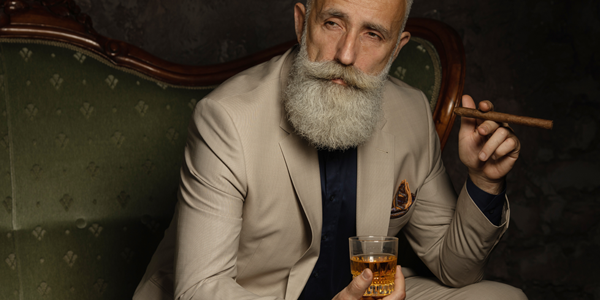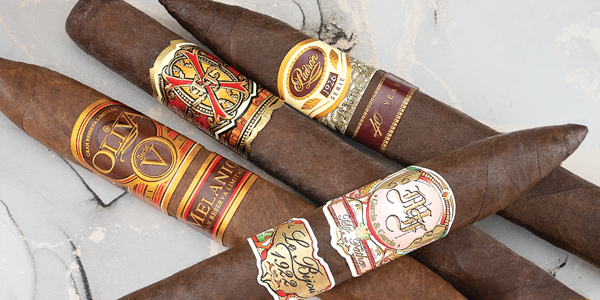Marvin Shanken: The First Aficionado
If you’ve ever wondered where the term “cigar aficionado“ came from, it came from Marvin R. Shanken, the founder, editor, and publisher of Cigar Aficionado magazine. Marvin Shanken didn’t invent the cigar business, but he parlayed his passion for premium cigars into a successful magazine for cigar lovers to learn about cigars, as never before, from the cigar-making families who blend and produce them as well as a team of cigar-loving critics.
Shanken put the spotlight on fine cigars at a time when they were falling out of favor with the public, and he brought in elements of celebrity and lifestyle to promote them, inevitably spearheading a significant boom in the cigar industry in the 1990s. He’s interviewed several notable figures over the years, including Dwayne “The Rock” Johnson, Alex Rodriguez, Michael Jordan, Ray Lewis, Robert De Niro, Facundo Bacardi, Francis Ford Coppola, and Fidel Castro. Let’s look at Marvin Shanken, as Cigar Aficionado celebrates its 30th anniversary, and how he defied the odds to create an iconic publication that has survived and thrived since its inception in 1992.
Becoming a Publisher: A Tale of Passion & Persistence
Doing what you love because you love it and not because it pays sums up Marvin Shanken’s path into publishing. He became infatuated with Cuba, and cigars, through a Cuban professor when he was a student at the University of Miami in the 1960s. He smoked inexpensive Hava-Tampa cigars in college, but his fascination with Cuban cigars grew when his expatriate professor enlightened him with stories about Cuban culture and the country’s renowned tobacco growing regions.
Shanken later earned an MBA from American University and began a career in investment on Wall Street. The firm he worked for had begun investing in wineries in California, and during visits to the burgeoning wine regions of the West Coast, Shanken fell in love with wine and decided that becoming a wine journalist, despite having no background in journalism, was paramount to his career in finance.
In 1973, Shanken acquired a newsletter for wine lovers, for $5,000, called Impact, with a modest circulation, and he believed he could grow it. He nurtured the publication on a shoestring budget with a staff of one or two others, and he refrained from taking a salary until about four years in when Impact had reached annual revenue of $100,000. By the late 1970s, a fellow wine publisher, on the West Coast, Bob Morrissey, insisted Shanken take over the industry tabloid he had started called Wine Spectator. Shanken loved the straightforward, digestible approach of Wine Spectator but initially resisted buying it. Eventually, Shanken relented as Morrissey persisted, saying he was going to fold it if they couldn’t work out a deal. The two agreed to terms, and Shanken’s publishing footprint grew with Wine Spectator. Soon after Shanken launched Market Watch, a trade publication for the wine and spirits industry.
Occasionally, Shanken wrote columns on premium cigars in Wine Spectator. He took a trip to Cuba to do research on Cuban cigars in 1991, and his visit cemented the idea of launching a publication dedicated to cigars.
Launching Cigar Aficionado
Cigar Aficionado isn’t owned by a giant publishing conglomerate with lots of resources. It began as, and still is, a small operation, but everyone’s heard of it. In the early 1990s, Shanken pitched his idea on launching a cigar magazine to everyone he knew. Staff, colleagues, advisors, and friends all cautioned him against it. Collectively, everyone Shanken consulted believed he would jeopardize his reputation and lose a lot of money. Frustrated by their lack of support, Shanken doggedly decided he would prove them wrong, and his determination became an obsession.
He settled on the name, Cigar Aficionado, borrowing the term from an article he wrote about cigars years earlier in Wine Spectator, despite more advice to the contrary from those who opined no one knew what “aficionado” meant or how to pronounce it. For Shanken, passion and ego are intertwined, and his number one reader is himself – the publication had to please himself first and foremost.
The first issue debuted in August of 1992, and, cleverly, Shanken used Wine Spectator as a catalyst to grow circulation for Cigar Aficionado, recognizing that many of Spectator’s readers shared a tangential interest in premium cigars. Shanken’s initial goal was to achieve a circulation of 20,000, but he wound up with 100,000 readers before the first issue came out because he had promoted it in advance in Wine Spectator. In its first year, Cigar Aficionado turned a profit – a rare feat in publishing – and today enjoys a circulation of 250,000 with a readership of 1.5 million worldwide.
The Fidel Castro Interview
Among the most pivotal moments in the history of Cigar Aficionado is Shanken’s interview with Fidel Castro in 1994. For decades, the top news organizations and armies of world-famous journalists dreamt of landing an interview with the elusive Cuban dictator. It took Shanken two years of traveling back and forth to Cuba to finally meet Castro in person, despite numerous assurances the interview would happen on each visit. He pitched his piece to Cuban government officials as an opportunity to promote the island’s only luxury export, handmade cigars, and he wanted to emphasize the significance of cigars to Cuba.
On a trip in February of 1994, Shanken was summoned late night from his hotel in Havana and driven to the Palace of the Revolution where, after passing through rigorous security checks, he was escorted with an interpreter into Fidel’s office to conduct the interview. Upon its publication, major news networks around the world picked up the story, greatly magnifying Cigar Aficionado’s exposure.
Shanken’s coverage of Cuba isn’t without controversy, though. Older Cuban Americans have been angered by the focus on Cuba, including prominent cigar-makers, who were forced to flee their homeland due to Castro’s oppressive regime. Shanken, however, makes a distinction between the people of Cuba, whom he adores, and the inflexible policies established by the U.S. and Cuban governments.
Marvin Shanken’s Cigar Collection
When it comes to collecting cigars, Shanken professes, “the limit is how much you can afford to buy.” That’s dangerous advice for diehard connoisseurs, but Shanken recounts his acquisition of nearly 4,000 cigars from the ’21’ Club, a historic hangout for New York City’s elite, as a godsend. For decades, New York’s luminaries stored their private cigar stashes at the ‘21’ Club, and when smoking laws restricted smoking in the restaurant, the owner reached out to Shanken, asking if he would be interested in purchasing the cigars, which he did after some sly negotiating.
He also owns, arguably, a few of the most prized humidors on earth – one that belonged to JFK, acquired at auction for $650,00; another was a humidor Winston Churchill received as a gift from the Cuban government in 1941; and a third humidor was autographed by Fidel Castro during his Aficionado interview. Despite the significant financial investment, Shanken garnered loads of media attention from his purchases and has no regrets.
Loving the Good Life
Athletes, actors, politicians, authors, generals, film directors, and celebrities from all walks have graced the cover of Cigar Aficionado issues over the past three decades, and many have sat for an intimate chat with the magazine’s editors. The publication covers a wide scope of related subjects, including vacations, gambling, golf, whiskey, professional sports, performance automobiles, watches, cocktails, and fine dining.
Of course, cigars, cigar-makers, ratings, tasting notes, and the magazine’s annual ‘Top 25 Cigars of the Year’ rankings are central topics of discussion. Readers consider Cigar Aficionado the world’s most authoritative source for all things related to premium cigars, and every one of today’s top cigar-makers have been profiled in its pages.
Bringing Cigar Lovers Together
Above all, Marvin Shanken and Executive Editor David Savona connect with readers who understand the camaraderie that exists between cigar lovers. Despite restrictive smoking laws and infuriating government overreach, the writers at Cigar Aficionado continue to foster a community of cigar enthusiasts who are as passionate about cigars as they are. The magazine’s annual Big Smoke events attract thousands of readers and consumers who eagerly attend to meet their favorite cigar-makers and enjoy cigars among like-minded aficionados. And nothing creates a stronger bond than a good smoke.







